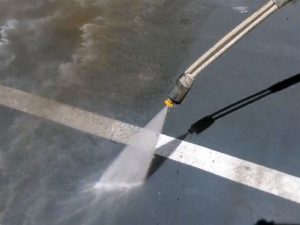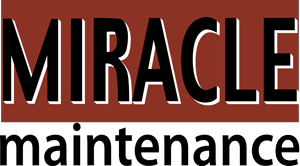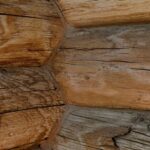Frequently Asked Questions
What is the process of sand blasting used for?
The process of sandblasting is used for cleaning surfaces, removing paint, rust, and contaminants, as well as preparing surfaces for coatings or repairs. It effectively restores and enhances the appearance of various materials.
Can sandblasters be used for cleaning stone walls?
Sandblasters can effectively be used for cleaning stone walls. They remove dirt, grime, and old paint, restoring the surface while preparing it for repairs or new finishes.
How does abrasive blasting remove surface materials?
Abrasive blasting removes surface materials by propelling abrasive particles at high speeds against a surface, effectively dislodging contaminants, rust, and old paint, thereby preparing the surface for further treatment or finishing.
How does sand blasting prepare surfaces for painting?
Sand blasting prepares surfaces for painting by removing contaminants, old paint, and rust, creating a clean and rough texture. This enhances paint adhesion, ensuring a smooth and durable finish for both residential and commercial applications.
How effective is a sandblaster for removing rust?
The effectiveness of a sandblaster for removing rust is significant. Sandblasters can quickly and thoroughly strip rust from various surfaces, making them an ideal solution for both residential and commercial rust removal projects.
What is the primary function of a sandblaster?
The primary function of a sandblaster is to clean and prepare surfaces by propelling abrasive materials at high speeds, effectively removing contaminants, rust, or old paint, and achieving a smooth finish for various applications.
Can sandblasters be used to remove old paint?
Sandblasters can effectively remove old paint. They utilize high-pressure abrasive materials to strip surfaces, making them ideal for paint removal on various materials, ensuring a clean and smooth finish.
Can a sandblaster be used to clean concrete floors?
Sandblasters can effectively be used to clean concrete floors. They remove dirt, stains, and surface imperfections, making them ideal for both residential and commercial concrete cleaning projects.
What are the types of sand blasting methods available?
The types of sandblasting methods available include gravity-fed, pressure blasters, and siphon sandblasters. Each method varies in operation and is suited for different cleaning and surface preparation applications.
What are the different types of sandblasters available?
The different types of sandblasters available include gravity-fed, pressure blasters, and siphon sandblasters. Each type has unique mechanisms and applications suited for various cleaning and surface preparation tasks.
How does a sandblaster work on metal surfaces?
A sandblaster works on metal surfaces by propelling abrasive particles at high speeds to clean, etch, or prepare the surface. This process effectively removes rust, paint, and contaminants, ensuring a smooth and ready-to-finish metal surface.
What safety precautions are required for sand blasting?
Safety precautions required for sand blasting include wearing proper personal protective equipment (PPE) such as respirators, goggles, and gloves, ensuring adequate ventilation, and following equipment safety guidelines to prevent injuries and exposure to hazardous materials.
How does sand blasting remove old coatings and rust?
Sand blasting effectively removes old coatings and rust by propelling abrasive materials at high speeds against surfaces. This process dislodges contaminants, ensuring a clean and smooth finish, making it ideal for surface preparation and restoration.
Can sand blasting be used on all types of surfaces?
Sand blasting can be used on various surfaces, but it is not suitable for all. Soft materials like wood or delicate surfaces may be damaged, while harder materials such as metal and concrete are ideal for this cleaning method.
Are sandblasters used in automotive repair shops?
Sandblasters are commonly used in automotive repair shops for cleaning and preparing surfaces. They effectively remove rust, paint, and contaminants, ensuring a smooth finish for refinishing and restoration projects.
Can sand blasting be used to clean stone surfaces?
Sand blasting can effectively be used to clean stone surfaces. This method removes dirt, grime, and weathering, restoring the stone's original appearance while also preparing it for sealing or further treatment.
Can a sandblaster be used for etching glass?
A sandblaster can indeed be used for etching glass. This technique allows for precise designs and patterns to be created on glass surfaces, making it a popular choice for decorative and functional applications.
What are the primary uses of a sandblaster in construction?
The primary uses of a sandblaster in construction include surface preparation, cleaning of materials, removal of old paint or coatings, and enhancing the adhesion of new finishes on various surfaces.
What is the purpose of sandblasting in construction?
The purpose of sandblasting in construction is to prepare surfaces by removing contaminants, old paint, or corrosion, ensuring better adhesion for coatings and enhancing the overall durability and appearance of structures.
What safety gear is required when using a sandblaster?
The safety gear required when using a sandblaster includes a respirator to protect against dust inhalation, safety goggles to shield the eyes, gloves to prevent skin irritation, and protective clothing to cover the body from abrasive materials.
What kind of sand is used in a sandblaster?
The type of sand used in a sandblaster is typically silica sand, which is effective for abrasive cleaning. Other materials like garnet, aluminum oxide, and glass beads can also be used depending on the specific cleaning requirements.
What are the benefits of using a sandblaster for wood?
The benefits of using a sandblaster for wood include efficient removal of old paint, smooth surface preparation, and enhanced wood grain visibility, making it ideal for restoration and refinishing projects.
How does sand blasting differ from soda blasting?
Sand blasting and soda blasting differ primarily in the materials used and their applications. Sand blasting employs abrasive sand for heavy-duty cleaning and surface preparation, while soda blasting utilizes sodium bicarbonate, making it gentler and ideal for removing contaminants without damaging surfaces.
What materials can be sandblasted effectively?
The materials that can be sandblasted effectively include metal, wood, concrete, glass, and brick. Each material benefits from sandblasting for surface preparation, cleaning, or finishing, depending on the specific project requirements.
How does sandblasting improve surface adhesion?
Sandblasting improves surface adhesion by creating a rough texture on the material being treated. This enhanced surface profile allows coatings, paints, or adhesives to bond more effectively, resulting in stronger and longer-lasting applications.
What maintenance is required for sandblasters?
The maintenance required for sandblasters includes regularly checking and cleaning the nozzle, inspecting hoses and fittings for wear, and ensuring the air supply is free of moisture. Additionally, replacing worn parts and keeping the equipment clean will enhance performance and longevity.
What are common applications for sandblasting?
Common applications for sandblasting include surface preparation for painting, rust removal from metal surfaces, cleaning of masonry and concrete, and etching glass. It is widely used in both industrial and residential settings to restore and maintain various materials.
How does sandblasting compare to other cleaning methods?
Sandblasting is a highly effective cleaning method that uses abrasive materials propelled at high speeds to remove contaminants, making it faster and more efficient than traditional cleaning methods like scrubbing or pressure washing, especially for tough surfaces.
What factors affect sandblasting efficiency?
The factors that affect sandblasting efficiency include the type of sandblaster used, the quality and type of abrasive material, nozzle size, air pressure, and the distance from the surface being cleaned.
What types of abrasives are used in sandblasting?
The types of abrasives used in sandblasting include silica sand, aluminum oxide, glass beads, and garnet. Each abrasive serves specific purposes, from heavy-duty cleaning to delicate surface preparation, ensuring effective results for various applications.

 Sandblasters come in three types, but they all follow the same principle. They clean and abrade surfaces, particularly metal, by using the abrasive abilities of finely ground silica sand. Sandblasters come in handy for removing paint, rust or other surface debris. This works because sand blasting uses an air-powered pressure gun that blasts sand at high velocity against a particular surface.
Sandblasters come in three types, but they all follow the same principle. They clean and abrade surfaces, particularly metal, by using the abrasive abilities of finely ground silica sand. Sandblasters come in handy for removing paint, rust or other surface debris. This works because sand blasting uses an air-powered pressure gun that blasts sand at high velocity against a particular surface. The gravity-fed sandblaster has three main components. These comprise a hand-held pressure gun with air hose, a hopper and a pressurized air tank. The hopper sits on top of the pressure gun and holds silica sand. When you squeeze the gun’s trigger, compressed air flows through the gun for as long as the lever is down. Simultaneously, the area at the top of the gun that connects to the hopper opens up. The air combines with gravitational force unlike pressure washing to pull the sand down, through the tool and out the barrel.
The gravity-fed sandblaster has three main components. These comprise a hand-held pressure gun with air hose, a hopper and a pressurized air tank. The hopper sits on top of the pressure gun and holds silica sand. When you squeeze the gun’s trigger, compressed air flows through the gun for as long as the lever is down. Simultaneously, the area at the top of the gun that connects to the hopper opens up. The air combines with gravitational force unlike pressure washing to pull the sand down, through the tool and out the barrel. The sodablasting gun usually takes two hands to wield. When you pull the trigger, the sand and air come out together. This process is cleaner and requires little maintenance but does come with disadvantages. Since the containers are completely enclosed, you can’t reuse the sand that is fired out by the gun. Empty containers must be swapped out for full ones. This often requires the purchase of a new canister.
The sodablasting gun usually takes two hands to wield. When you pull the trigger, the sand and air come out together. This process is cleaner and requires little maintenance but does come with disadvantages. Since the containers are completely enclosed, you can’t reuse the sand that is fired out by the gun. Empty containers must be swapped out for full ones. This often requires the purchase of a new canister.








No Comments
Sorry, the comment form is closed at this time.